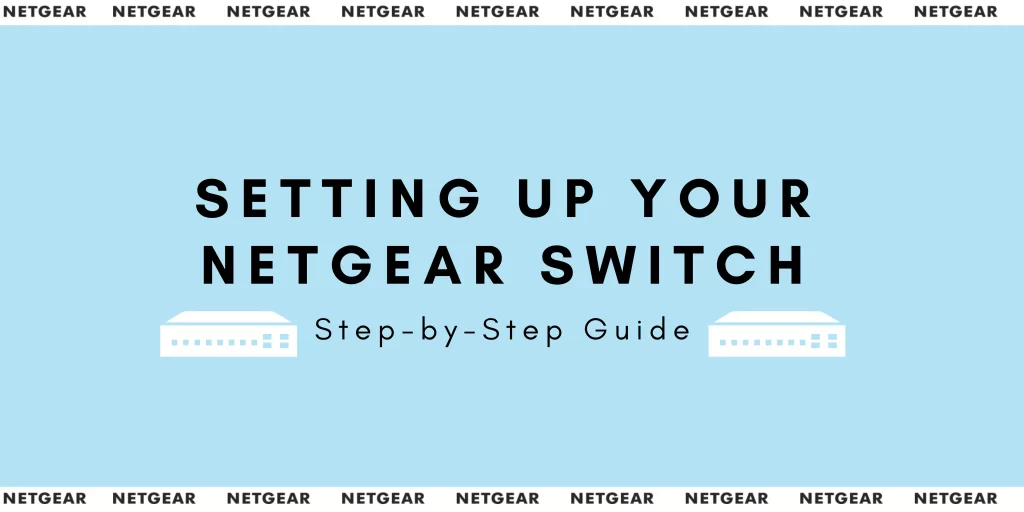How to Set Up Your Netgear Switch

Netgear is a popular brand that offers a wide range of networking devices, including switches. If you've recently purchased a Netgear switch, you may be wondering how to set it up. Let’s walk you through the steps to get your Netgear switch up and running!
Step 1: Connect Your Netgear Switch to Your Network
Connect one end of an Ethernet cable to the LAN port on your Netgear switch and the other end to an available Ethernet port on your router or modem. This will allow your switch to communicate with the other devices on your network.
Plug in the power cord to the back of the Netgear switch and connect it to a power source. Make sure the power source is nearby and easily accessible.
Power on the Netgear switch. You should see some lights on the front of the switch indicating that it is receiving power and is ready to use. If your switch does not light up, double-check your power cable and the power source.
If you experience any issues, consult the user manual or contact Netgear support for further assistance. If you purchased your switch from a different company, such as BZBGEAR, you can call their tech support team as well.
Step 2: Access the Switch Management Interface
Once your Netgear switch is connected to your network and powered on, you'll need to access the switch management interface to configure it. Here's how to do that:
Open a web browser on a computer connected to the same network as the switch. If your computer or laptop is connected to the same router or modem as the switch, then you’re good to go!
Enter the default IP address for the switch (typically 192.168.0.1 or 192.168.1.1) in the browser's address bar and press Enter.
If the default IP address does not work, you can try using the switch's serial number to access the management interface. If you have trouble accessing the management interface, contact technical support.
Step 3: Log in to the Switch
Once you've accessed the switch management interface, you'll need to log in to the switch to make changes to the configuration. Follow these steps:
Enter the default login credentials (username: admin, password: password) or the custom login credentials you set during the initial setup process.
Step 4: Configure the Switch Settings
After logging in to the switch, you can start configuring the switch settings according to your requirements. Here are some common settings that you may want to configure:
VLANs: Virtual Local Area Networks (VLANs) are used to segment the network into smaller subnets, which can help improve network security and performance. For example, you might want to create a VLAN for your finance department to keep its sensitive data separate from other departments. By putting all the finance department's devices in a separate VLAN, you can ensure that they only communicate with each other and not with devices in other VLANs. VLANs can also improve network security and efficiency by reducing the amount of broadcast traffic on the network and by controlling access to network resources.
Port Mirroring: Port Mirroring is used to copy the traffic from one port to another port. This is useful for monitoring network traffic for troubleshooting purposes. For example, if you have a network switch with multiple computers connected to it, you might want to set up port mirroring so that you can monitor the traffic going to and from a specific computer. By mirroring the traffic from that computer's port to another port that is connected to a monitoring device or software, you can see all the data that the computer is sending and receiving, even if it's not intended for the monitoring device or software.
QoS: Quality of Service (QoS) is used to prioritize network traffic based on its importance. This can help ensure that critical applications get the bandwidth they need to function properly. For example, if you are video conferencing with a colleague, the QoS system will give that traffic higher priority than other types of traffic on the network, like downloading files or browsing the web.
Step 5: Save the Configuration and Exit
Once you've made changes to the switch settings, you'll need to save the configuration and exit the management interface. Follow these steps:
After making changes to the switch settings, save the configuration. Double-check and make sure your settings are saved!
Now it’s time to exit the management interface. Your switch should be up and running the way you want it to.
Final Thoughts
Setting up a Netgear switch is a fairly simple process. By following the steps outlined in this blog, you should be able to get your switch up and running quickly. If you encounter any issues during setup, consult the user manual or the Netgear website for additional assistance. If you are looking for a Netgear switch, check out our line of Netgear switches at bzbgear.com!
8.00 a.m. - 5.00 p.m. (PST)
10.00 a.m. - 3.00 p.m. (PST)
(by appointment only)



